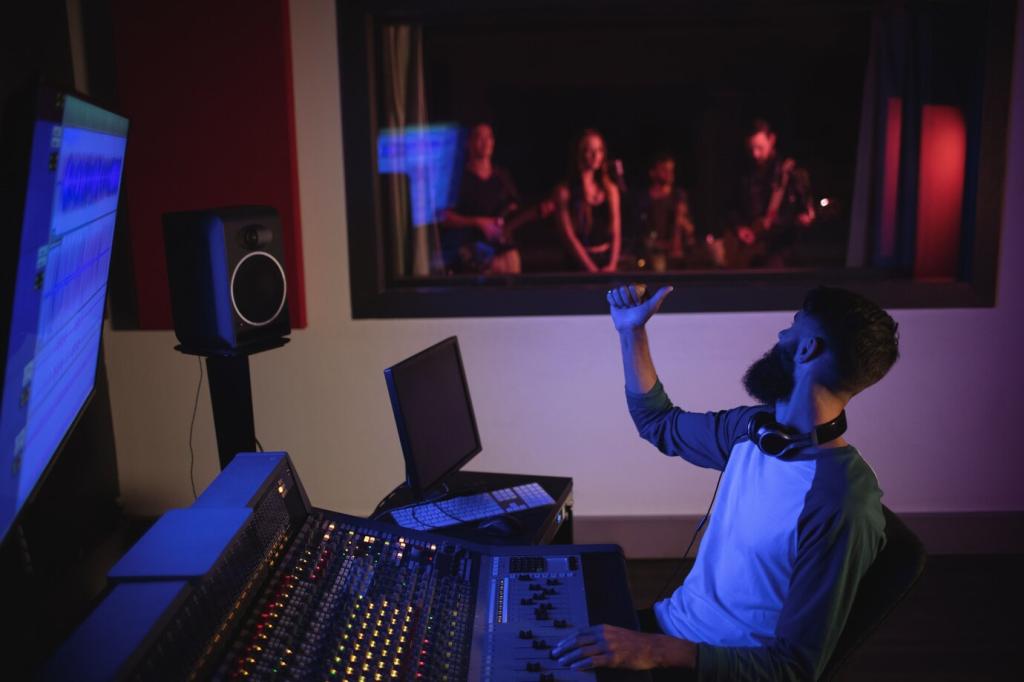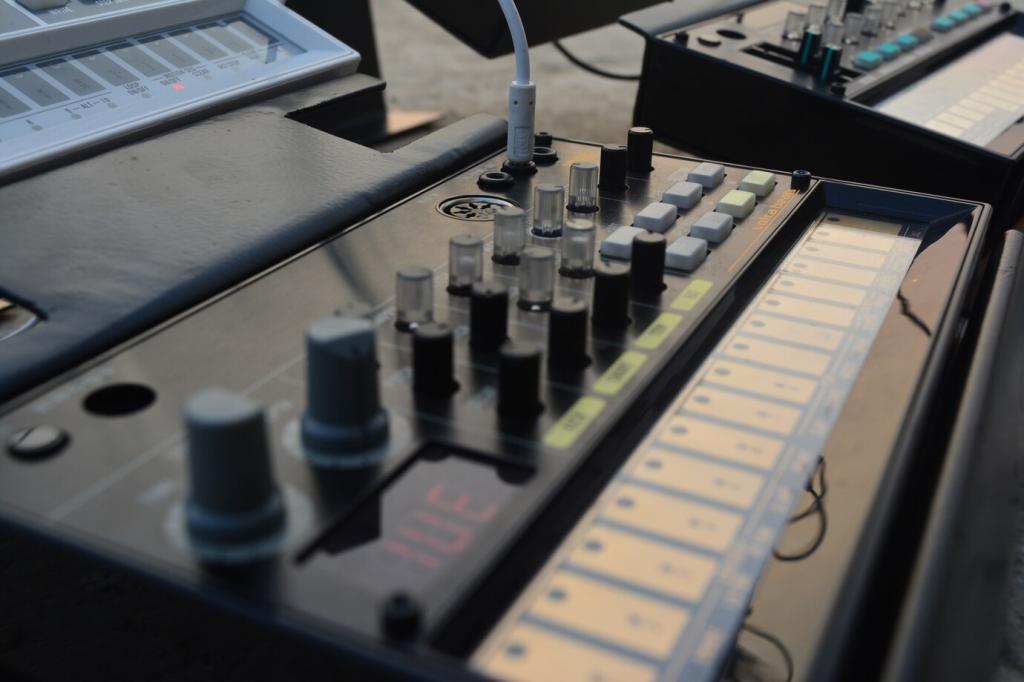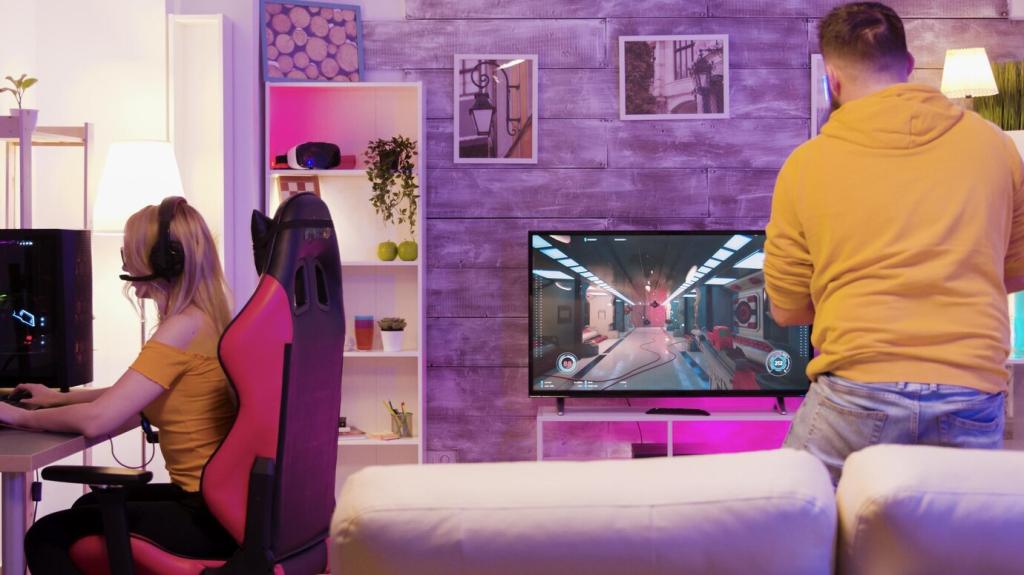Top Home Theater Projectors: Bring Cinema-Scale Wonder Home
Brightness and Contrast That Shape the Picture
ANSI lumens versus real-world lighting
Manufacturers quote ANSI lumens, but your room decides the final word. Dark walls, controlled lighting, and an ambient light rejecting screen can make a modestly bright projector look stunning. Tell us about your room, and we’ll help estimate the lumens you actually need.
Native contrast, dynamic iris, and black levels
On projectors, true black is a quest. LCoS often excels at native contrast, DLP can punch up highlights, and dynamic irises deepen dark scenes. Share which movies you use for testing black levels, and we’ll recommend scene-specific settings to optimize shadows without crushing detail.
A small tweak that rescued a movie night
We dimmed table lamps, closed a single curtain, and enabled a gentle dynamic contrast mode. Suddenly the city skyline regained star sparkle. If you have a similar quick win, drop it in the comments—your tip could save someone else’s Friday premiere night.
True 4K, pixel-shifting, and viewing distance
Native 4K panels are exquisite, yet many pixel-shifting models look nearly as detailed at normal seating distances. Measure your screen and couch placement; we can help you calculate whether the premium is visible. Comment with your distances and we’ll share personalized clarity tips.
HDR10, HLG, and tone mapping realities
Projectors cannot hit TV-level HDR brightness, so tone mapping is crucial. Look for smart algorithms that preserve highlights without dimming midtones. If your bright scenes feel flat, try a mid-contrast gamma curve and tell us how it looks—we love hearing your tweaks.
Color gamuts and simple calibration wins
A projector covering full Rec.709 with an accurate white point already feels rich. DCI-P3 filters deepen color but reduce brightness. Start with a basic two-point white balance, then fine-tune skin tones. Subscribe for our step-by-step weekend calibration guide tailored for top home theater projectors.


Throw Distance, Lenses, and Room-Friendly Placement
Calculate your throw distance before mounting. Generous vertical and horizontal lens shift lets you align the picture without tilting the chassis. Avoid keystone whenever possible to keep edges crisp. Share your screen size and we’ll recommend throw ranges that fit your layout.
Throw Distance, Lenses, and Room-Friendly Placement
Short-throw and ultra-short-throw projectors thrive in tight spaces but demand flat screens and careful placement. Long-throw models work beautifully in ceiling-mounted setups. Tell us your room depth and furniture constraints, and we’ll help match the ideal style to your space.
Light Sources: Lamp, Laser, or LED?
01
Lamp pros, cons, and ownership realities
Lamp projectors deliver punchy brightness at attractive prices but dim gradually and need periodic replacements. Warm-up time is real, and eco modes extend life. Post your lamp-hour counts and viewing habits—we’ll advise when to replace for consistent brightness without wasting usable hours.
02
Laser longevity and color stability
Laser light sources offer near-instant on, consistent brightness, and long service life, often around 20,000 hours. Many users notice steadier colors over time. If you upgraded from lamp to laser, tell us what changed most for you—startup convenience, noise, or perceived contrast.
03
LED efficiency and portable possibilities
LED projectors run cooler and quieter, with excellent efficiency, yet typically lower maximum brightness. In darker rooms they feel delightfully comfortable for eyes. Considering a portable LED for movie nights? Subscribe for our checklist to balance brightness, battery life, and screen size.
Gaming with Top Home Theater Projectors
Input lag and the sweet spot for consoles
Aim for under 20–25 milliseconds for responsive play, especially in shooters. If your projector offers a game mode, use it to disable heavy processing. Share your console model and favorite titles—we’ll recommend settings that balance latency with clarity.
Motion handling and frame interpolation choices
Frame interpolation can smooth sports but adds latency and a soap-opera effect to films. For gaming, turn it off. Some models support 120 Hz at lower resolutions for silky motion. Tell us your preferences, and we’ll help you tune for each genre.
A first victory royale on a 120-inch screen
A reader mapped crouch to a rear paddle and set low-lag mode, then finally clutched a win with clear peripheral vision across a massive image. What tweaks made your setup competitive? Drop your settings to help fellow big-screen gamers.

Smart Features, Connectivity, and Ecosystem Harmony
For long distances, consider active optical HDMI to avoid handshake quirks. eARC simplifies audio to your receiver with high-bandwidth formats. Share your run length and gear list—we’ll help predict compatibility and suggest cables that won’t fail mid-credits.

Smart Features, Connectivity, and Ecosystem Harmony
Internal apps are convenient, but external streamers update faster and often deliver better HDR handling. If you use multiple services, a dedicated streamer can unify everything. Comment with your app mix, and we’ll recommend a streamlined, lag-free path.
